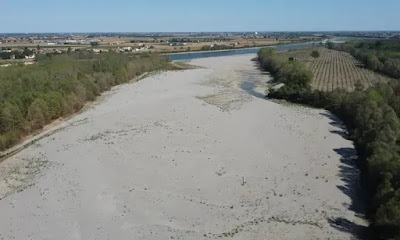New satellite images show the extent of the devastation caused by catastrophic flooding and rains in Pakistan.
The images, from Planet Labs and Maxar, show swaths of green fields, villages and buildings before monsoonal rains and flooding began lashing the country in June.
Satellite images reveal the same areas months or weeks later covered in brown water. In some parts roads have disappeared and flood waters have created their own rivers.
The pictures depict severe flooding across the country, from Sindh province in the south, to the Kabul river in the north.
The floods, described by prime minister Shebaz Sharif as the worst in Pakistan’s history, have so far killed more than 1,100 people and displaced millions. Sharif said it would cost at least $10bn to repair damaged infrastructure spread across the country.
More than 33 million people, or one in seven Pakistanis, have been affected by the flooding.
Around a half million of those displaced are living in organised camps, while others have had to find their own shelter.
The rains that began in June have washed away vital crops and damaged or destroyed more than a million homes.
Authorities and charities are struggling to accelerate aid delivery to those affected, a challenging task in areas cut off because many roads and bridges have been critically damaged.
Displaced people have been wandering what dry land remains, seeking shelter, food and drinking water.
Sharif said the floods badly destroyed crops, and his government was considering importing wheat to avoid any shortage of food. Pakistan receives heavy, and often destructive, rains during its annual monsoon season, which are crucial for agriculture and water supplies. But such intense downpours have not been seen for three decades.
Pakistani officials and others have blamed climate change, which is increasing the frequency and intensity of extreme weather around the world.
UN secretary-general António Guterres said Pakistan’s flooding were a signal to the world to step up action against climate change.
“Let’s stop sleepwalking toward the destruction of our planet by climate change,” he said in a video message to an Islamabad ceremony launching the funding appeal. “Today, it’s Pakistan. Tomorrow, it could be your country.”
The disaster comes at a difficult time for Pakistan, where the economy is in freefall. Appealing for international help, the government has declared an emergency. The UN launched a formal $160m appeal on Tuesday to fund emergency aid.
“Pakistan is awash in suffering. The Pakistani people are facing a monsoon on steroids – the relentless impact of epochal levels of rain and flooding,” Guterres said.
Agence France-Presse and Associated Press contributed to this report.

.webp)
.webp)


.webp)


.svg.png)






.svg.png)






